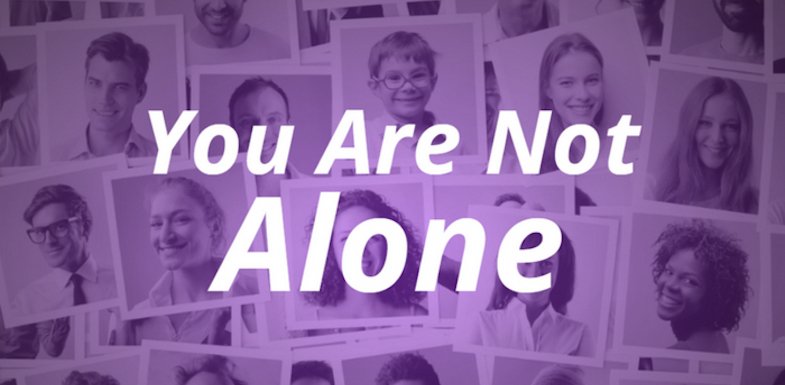We don’t often associate June with pain. June signals the end of school days and the official start of summer. But for some people, head pain doesn’t care about the weather or the month. June is Migraine and Headache Awareness Month, bringing awareness to the economic and societal impact of migraine and headaches. This year, the National Headache Foundation is driving these efforts to shed light on these invisible illnesses with their “You Are Not Alone” campaign.
Why is Migraine And Headache Awareness Month important?
Because so many people suffer from migraines (42 million in the U.S. alone), this is an issue that will likely affect most people during their lifetime, either as a sufferer or as a family member or friend. Migraine and Headache Awareness Month also seeks to eliminate common barriers to treatment, one of which is lack of knowledge among healthcare professionals and the general public.
As the World Health Organization reports:
“Worldwide, on average, only 4 hours of undergraduate medical education are dedicated to instruction on headache disorders. A large number of people with headache disorders are not diagnosed and treated: worldwide only 40% of those with migraine or TTH are professionally diagnosed, and only 10% of those with medication-overuse headache (MOH).”
In addition to the pain, the impact of migraines may be more widespread than previously thought. From higher rates of suicide and depression among migraine sufferers to an estimated financial impact of $5.6 billion to $17.2 billion per year due to lost productivity and days off. Migraines are the third most prevalent illness in the world. Over 12% of the world population, including children, suffers from migraines. Clearly, migraine pain has consequences that are widespread and serious.
Spreading headache and migraine awareness
Everyone is familiar with a headache. The classic throbbing head is hard to ignore, especially when you are trying to concentrate or sleep. But, did you know that there are actually numerous different kinds of headaches, all with their own symptoms and causes? Here is the low-down on the most common migraine conditions you’ve probably never heard of.
Hemiplegic migraine
This type of migraine is a subgroup of what is known as migraine with aura. This kind of migraine is very rare, but is one of the most dangerous forms. It can cause paralysis, body weakness, confusion, or visual disturbances, and can mimic symptoms similar to a stroke.
When this migraines strikes, it generally only lasts up to an hour. However, the visual disturbances can sometimes last for days to weeks.
Ocular migraine
This condition is similar to migraine with aura, but the symptoms such a visual disturbances only occur in one eye rather than both. This condition is not inherently deadly, but can be potentially limiting. It can even be dangerous as it can interfere with activities like driving.
This condition has the classic head pain on one side of the head. It can also produce nausea, vomiting, and sensitivity to light and sound.
Abdominal migraines
This condition is odd as it is not associated with the throbbing in the head as other types of migraines are. Instead, this condition often causes chronic abdominal pain, cramping, vomiting, pallor, and the inability to eat. These pain events can last anywhere from one hour to as long as three days.
Silent migraines
Silent migraines are accompanied by many symptoms of migraine, but without the pain and with distinct visual symptoms. Patients may suffer from extreme visual symptoms, such as floating lines, flashing lights, tunnel vision, and hallucinations. They may also lose their speech and have a distorted sense of smell or taste. A silent migraine is a severe sensory condition that can be enough to limit a person’s ability to function.
These are just a few types of migraines that make up a much larger category of migraines. For more information on specific headaches and migraines, check out the International Headache Society’s website and classification system.
Ways to fight back against head pain
If you are ready to find lifestyle habits to reduce your head pain as much as possible, aim to:
- Drinking more water as dehydration is one of the most common migraine triggers.
- Eat good fats like omega-3s that can be found in fish such as mackerel, tuna, and salmon. Research has shown that they can help reduce the frequency, pain level, and duration of migraines.
- Add magnesium as it is a great nutrient that helps prevent migraines. It can also help with increasing energy, calming anxiety, and relieving digestive issues.
- Eat more riboflavin (better known as vitamin B2). It has been shown to decrease the chance of migraines!
- Know your personal trigger foods and make sure you avoid them.
How to get involved during Migraine and Headache Awareness Month
The National Headache Foundation has launched their “You Are Not Alone” campaign that encourages head pain sufferers to share their story. The Foundation explains that:
“Anyone who suffers from headache or migraine is invited to share their story at headachestory.com, either through words or video. Each entry will be on display for others to read and share in a concerted effort to end the cycle of silence. These stories will remain live after June, serving as an ongoing source of comfort and community. With more than 42 million Americans haunted by headache and migraine, it’s time to shed light on the invisible disease. Through sharing stories, the hope is to raise awareness, further the advancement of research and discover new and better treatment options.”
How else can you get involved? Join in their recognition days, for disorders like cluster or pediatric headaches. Finally, jump onto social media to share your experiences with head pain (use #MHAM), to spread awareness among family and friends.
How has head pain affected your life? How will you use Migraine and Headache Awareness Month to spread awareness about this debilitating set of conditions?

